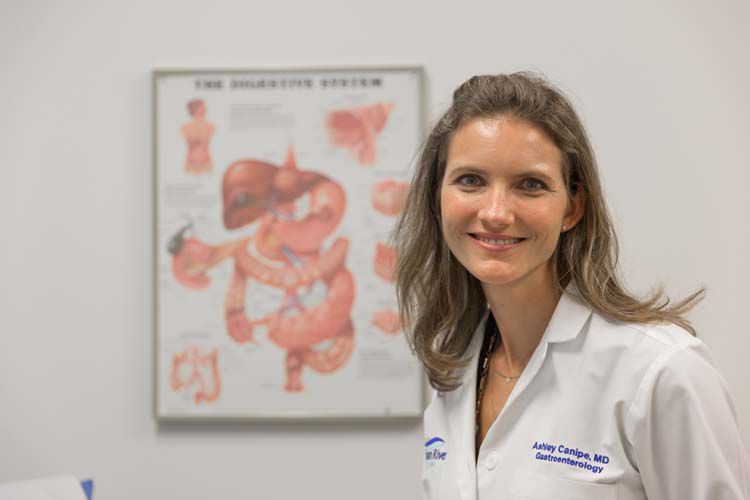Barrett’s esophagus, according to Indian River Medical Center gastroenterologist Dr. Ashley Canipe, is a complex condition that is “significantly more common” in older Caucasian males than any other age or ethnic group.
If left untreated, Barrett’s can cause a range of problems and potentially lead to esophageal adenocarcinoma – a type of cancer.
The National Institute of Diabetes and Digestive and Kidney Diseases, however, says the exact cause of Barrett’s esophagus remains unclear.
There appear to be strong anecdotal connections between Barrett’s and gastroesophageal reflux disease – or GERD – obesity and smoking, but perhaps the most fascinating aspect of Barrett’s is the cell-shifting it causes.
“How I like to explain it to patients,” says Canipe, “is basically that the stomach is built for acid. Its job is to make acid and contain acid. The lining of the cells in the stomach are very much used to acid. However, the lining and the cells of the esophagus are not built for acid, so when people have gastroesophageal reflux disease, the acid that is normally in the stomach refluxes up into the esophagus and can irritate or damage the cells lining the esophagus. As a result of that injury, it’s thought that the cells there in the esophagus change to look more like intestinal or gastric cells as opposed to esophageal cells. It’s a metaplasia, which basically means that the cells have changed.”
“When we see that,” Canipe continues, “we biopsy it. Then when our pathology colleagues look at it under the microscope, they’re looking for specific changes in those cells and if those changes are present – called intestinal metaplasia – they also do a special staining. Then if both the endoscopic and the histologic features are there, that’s when we make a diagnosis of Barrett’s esophagus.”
The Mayo Clinic states that “although the risk is small” of Barrett’s developing into full-blown esophageal cancer, “it’s important to have regular checkups for pre-cancerous cells.”
Dr. Richard Battafarano, director of the Division of Thoracic Surgery at Johns Hopkins, agrees, saying “without surveillance endoscopy, there’s no way to tell if the condition is progressing toward cancer,” and the National Institutes of Health points out “esophageal cancer is often diagnosed at an advanced stage because there are no early signs or symptoms” without regular endoscopic exams.
Canipe, who joined IRMC in August 2015, notes again that Barrett’s esophagus is “exceedingly more common in elderly, white males who smoke and have a long history of reflux symptoms.”
WebMD says approximately 10 percent of people with chronic GERD symptoms will develop Barrett’s, and those symptoms can include indigestion, heartburn, hoarseness, chronic dry coughing, laryngitis, chest pains and even bad breath.
“If you are having symptoms,” cautions Canipe, “especially of any sort of indigestion, heartburn or trouble swallowing, you should definitely touch base with your primary [care physician] or your gastroenterologist, because those are the earlier signs of Barrett’s.”
If the disease is detected, Canipe says the next step might be to determine if the Barrett’s is smooth or if it has “nodular features or features of aberrant blood vessels. So, we look at it very closely using a special clear cap that we affix to the tip of our endoscope with special light called narrow band imaging to accentuate any mucosal abnormalities that might be present in the Barrett’s segment.”
After a lengthy description of endoscopic procedures involving “endoscopic mucosal resections, metal lassos or snares, electric cautery, endoscopic ultrasound and radio-frequency ablation,” Canipe says, “I use no scalpels. I never cut the skin.”
While Canipe admits “I’m the only one that does endoscopic mucosal resections or EMRs in the whole area,” she is quick to praise the work of her colleagues, singling out Dr. Bruce Grossman and his work in radio frequency ablation, citing the need for what she calls “a multi-modality approach to treatment” for this complex condition.
Dr. Ashley Canipe is with the Indian River Medical Center. Her office is in the new Health and Wellness building at 3450 11th Court, Suite 206 in Vero Beach. The phone number is 772-299-3511.

